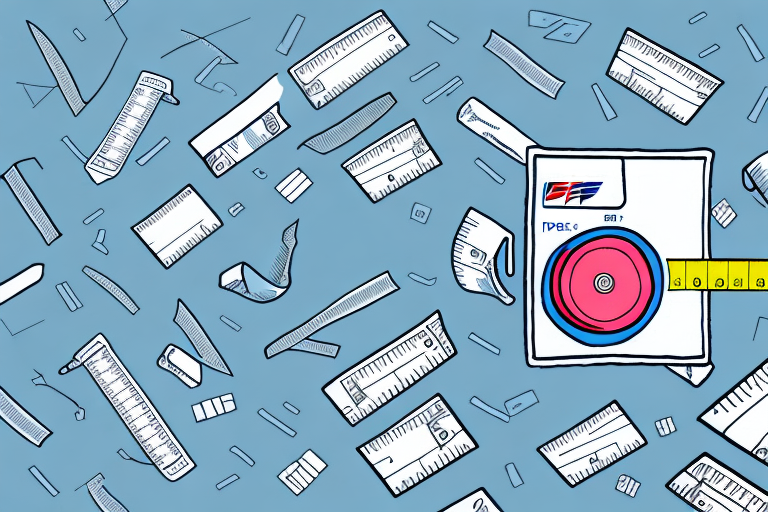Discovering the Largest Box You Can Ship with UPS
When it comes to shipping through UPS, finding the right box size can make all the difference. From maximum size restrictions to shipping fees and even packing tips, there's a lot to consider to ensure your package arrives safely and securely. In this article, we'll cover everything you need to know about discovering the largest box you can ship with UPS.
Determining the Maximum Box Size and Weight for UPS Shipping
UPS Size Restrictions
The maximum size for a shipment through UPS is 165 inches in combined length and girth (2 × height + 2 × width). This means that, depending on the dimensions of your package, the largest box you can ship through UPS may vary.
To determine if your package meets UPS size requirements:
- Measure the length, width, and height of your package.
- Calculate the combined length and girth using the formula:
Length + (2 × (Height + Width)) ≤ 165 inches
If the total is 165 inches or less, your package can be shipped through UPS.
UPS Weight Restrictions
The maximum weight for a package shipped through UPS is 150 pounds (68 kg) domestically and 70 kg (154 lbs) internationally. If your package exceeds these weight limits, you may need to consider using UPS Freight or another freight shipping service. Additionally, certain items, such as hazardous materials or oversized packages, may incur additional fees or require special handling.
For the most accurate and up-to-date information, refer to the official UPS Shipping Guidelines.
UPS Box Size Restrictions and Packaging Guidelines
Understanding UPS Packaging Guidelines
Proper packaging is crucial to ensure your package arrives in good condition. UPS recommends:
- Using double-walled boxes for heavier items to provide extra strength.
- Reinforcing the corners and edges of the box with high-quality packing tape.
- Securing items with appropriate cushioning materials like bubble wrap or packing peanuts to prevent movement during transit.
Special Handling for Oversized or Irregularly Shaped Packages
Packages that are oversized or have irregular shapes may require special handling, which can include bespoke packaging solutions or additional fees. It's essential to consult with UPS or visit their website to understand specific requirements for these types of packages.
Choosing the Right UPS Box Size: Tips and Best Practices
Selecting the Appropriate Box
Select a box that is sturdy and allows for at least two inches of cushioning space between the contents and the walls of the box. This extra space provides protection during transport.
Considering Package Weight
For heavier packages, using multiple smaller boxes can be more practical and safer than one large box. This approach ensures easier lifting and handling, reducing the risk of damage.
Optimizing Box Shape
If your items are long and narrow, a tube-shaped box may be more appropriate than a standard rectangular box. This helps prevent bending or damage to the contents.
Sealing Your Package Properly
Use strong packing tape to seal all seams and edges of the box securely. Additionally, consider using cushioning materials like bubble wrap or packing peanuts to further protect your package.
Understanding UPS Shipping Fees for Large Boxes
Additional Fees for Oversized Packages
Shipping large or heavy packages via UPS can incur additional fees beyond standard shipping costs. These fees may apply to oversized packages, those requiring special handling, or packages exceeding weight limits.
Cost-Effective Packaging Strategies
Choosing the right box size helps avoid extra fees. Ensure your package does not exceed the size or weight limits, and packaging is optimized for protection and efficiency.
UPS Billing Practices
UPS uses dimensional weight pricing for certain shipments. Dimensional weight is calculated based on the volume of the package and can affect shipping costs, especially for lightweight but bulky items.
For more details on UPS shipping fees, refer to the UPS Shipping Rates page.
The Benefits of Using the Right Box Size for Your UPS Shipment
Enhanced Protection
Using an appropriately sized box ensures that your contents have adequate cushioning, reducing the risk of damage during transit.
Handling Efficiency
Properly sized packages are easier for UPS employees to handle, minimizing the likelihood of mishandling and associated damage.
Cost Savings
Avoiding oversized dimensions and excess weight can help you save on shipping costs by staying within UPS's standard pricing structures.
Packing Large Items Safely and Securely for UPS
Using Reinforced Boxes
For large items, opt for double-walled or reinforced boxes to provide extra strength and durability during shipping.
Cushioning and Stabilizing Contents
Fill all void spaces with cushioning materials like bubble wrap, foam, or packing peanuts. This prevents items from shifting and reduces the risk of damage.
Securing Multiple Items
If shipping multiple items in one box, place heavier items on the bottom and use dividers or separators to keep items from moving or colliding during transit.
Avoiding Common Mistakes When Selecting a UPS Box
Choosing Incorrect Box Size
Using a box that is too large can cause contents to move excessively, while a box that is too small may not provide sufficient protection. Both can lead to damaged packages.
Insufficient Cushioning
Failing to provide adequate cushioning can result in your items being damaged or broken during transport.
Poor Sealing Practices
Not sealing your package tightly with strong packing tape can lead to the box opening during transit, increasing the risk of content loss or damage.
Expert Advice on Finding the Best Box Size for Your UPS Shipment
If you're still unsure about the best box size for your UPS shipment, seeking expert advice is recommended. UPS offers a variety of resources and support to help ensure your package is shipped successfully.
- Consult UPS Customer Service: Reach out to UPS representatives for personalized assistance.
- Use Online Tools: Utilize UPS's online packaging tools and guidelines available on their website.
- Visit a UPS Store: Get hands-on help with packaging and box selection from UPS Store experts.
Conclusion
Selecting the right box size is crucial for a successful and secure UPS shipment. By understanding UPS's size and weight restrictions, following packaging guidelines, and using best practices for selecting and preparing your box, you can ensure that your package arrives safely and efficiently. Proper sizing not only protects your items but also helps you avoid unnecessary shipping fees, making your UPS shipping experience smoother and more cost-effective.
For more information and resources on UPS shipping, visit the ShipScience UPS Resources page.






















